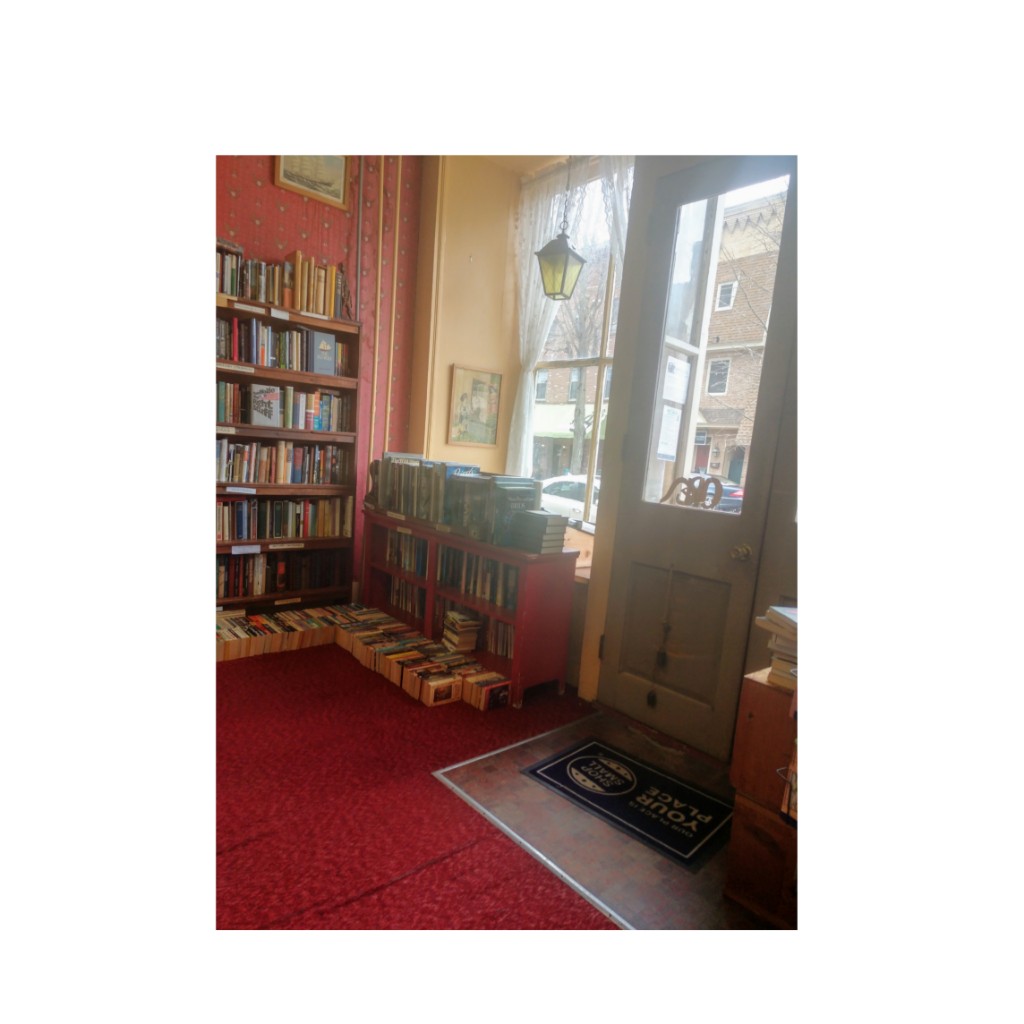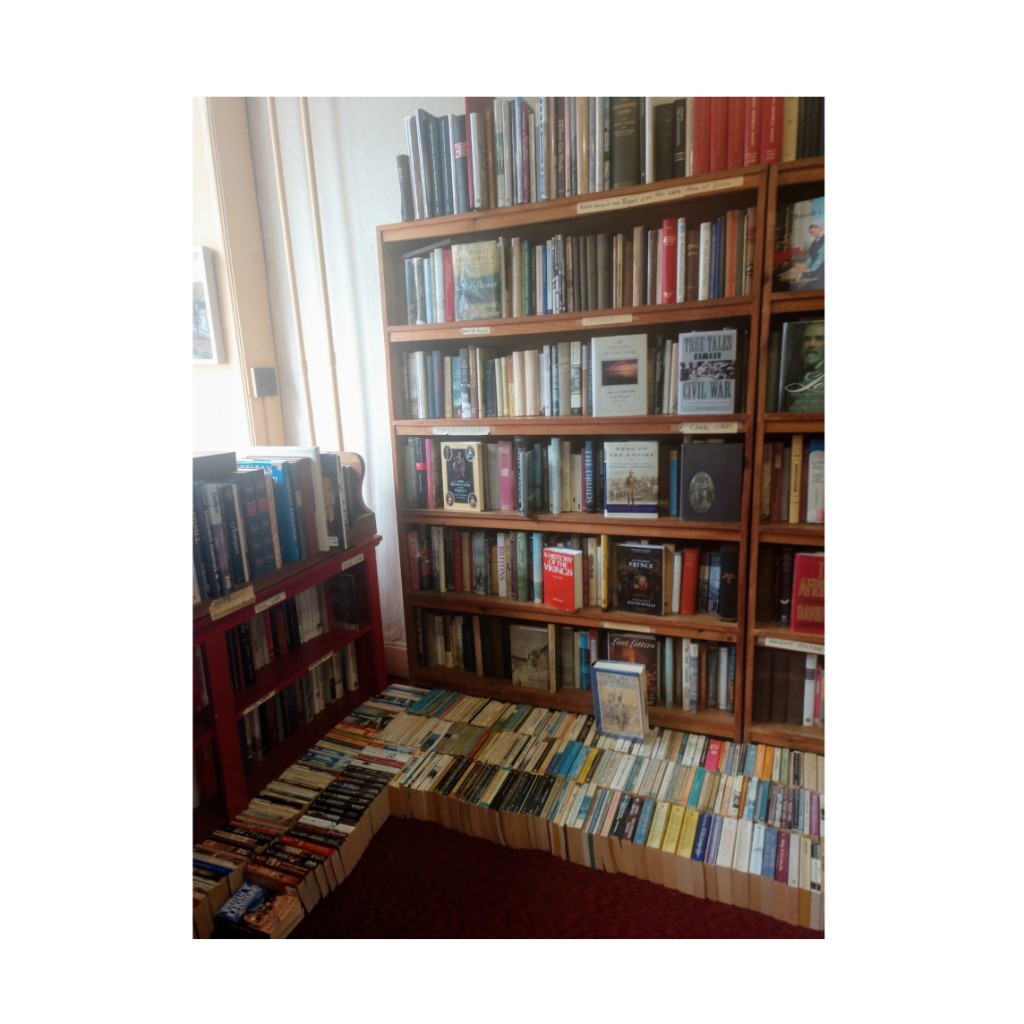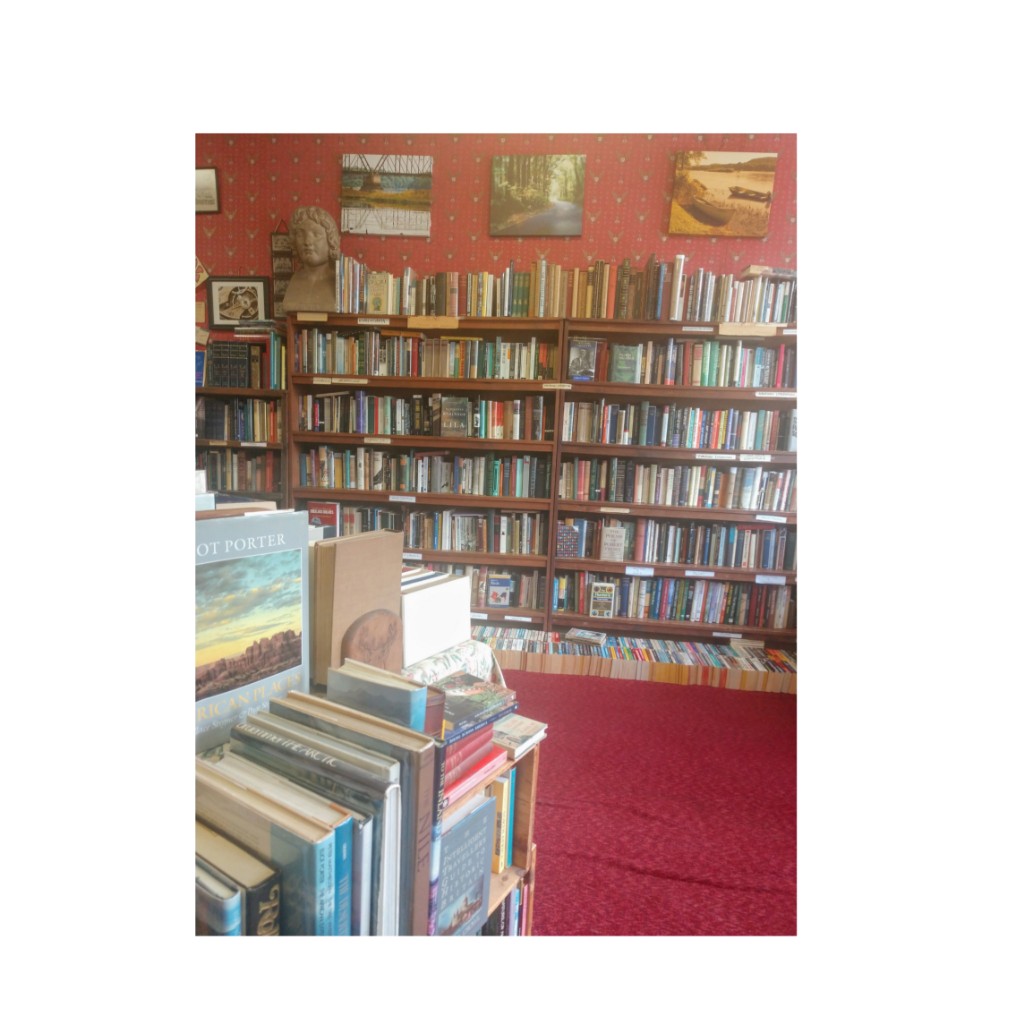Classic, old paperback books can be divided into many categories, and nowhere is that more clear than at D.J. Ernst Books. Located in downtown Selinsgrove, the small store houses volumes full of treasures. Every shelf is filled to the brim, to the point where some books are now piled onto each other. On my latest visit to the bookstore, the owner fondly referred to as Homer by customers, was searching for a space to house his newest copies of The Wonderful Wizard of Oz. At the risk of taking the Hardy Boys books off the shelves, Homer was trying to find the perfect space where the characters of Oz could reside on the shelves.
When you first enter D.J. Ernst Books, you can hear the sound of the welcoming bell clinking below the door. Light reflects in the one room store from the giant window displays which makes sure that the space is always filled with bright morning light. Homer keeps the store open until the late afternoon so whenever the sun is out, light pours into the store. This makes it not only easy to see the fading titles on the older books, but it makes it easy to view the room as a whole.
Most of the shelves in the store are fitted against the walls, except for the display stacks right in the middle of the space. These books are miscellaneous stacks haphazardly organized, but it still works as a display. It’s difficult to describe this method, maybe organized chaos? For whatever reason, the system works and somehow the customer can see all the titles displayed, even if they’re not organized in a traditional sense. It’s an order of sorts, such as the one Walter Benjamin refers to in his essay “Unpacking My Library”: “For what else is a collection but a disorder in which habit has accomodated itself to such an extent that it can appear as order” (Benjamin, 60).

It’s not just bookshelves that the titles rest on. Extra floor space is occupied by the selection as well. Lining the floor in front of every bookshelf are rows of books, each designated in a section. For example, the books on the floor in front of the westerns section also belong to that category. These books are loosely organized alphabetically, which makes for fun browsing. It’s on the floors that you can find the cheapest editions, used paperback books fit for a college student’s budget. There are some real finds on the floor, as unique as that sounds! Agatha Christie mysteries occupy the floor most days, as do books by Thomas Hardy and Victor Hugo.
Somehow, even with the floor occupied by books, there is still enough room to browse the store without running into another person. The plush carpet makes for quiet steps, and a wonderful sense of quiet makes for a good bookstore. Even though the customer gets the feeling of being surrounded by literature on all sides, your walking bubble never bursts. The customer has enough room to move through the space as they feel like it, which is just another reason to visit the store.
Onto the left side of the store, immediately when you enter you find greeting cards. This is the extent of the merchandise that isn’t book related. The small cart adds variety to the room, but the books are the real stars. To the left are the westerns, mostly in new condition. Immediately adjacent are the history books, both American and world history. These contain older volumes as well as newer, contemporary authors such as Nathaniel Philbrick and David McCullough. It’s the popular historical books that are displayed on these shelves, such as Philbricks’s well-known Mayflower (2006).

The next shelf over contains books on Pennsylvania history. Out of all the books in the store, these are the most out of fashion. They were widely sought after when Homer first opened the store in the 70’s, but now they rest on the shelves gathering dust and the labels are almost worn off. Directly next to these volumes, however, are several editions of children’s literature. There’s usually a few Harry Potter books, some fairytales, Aesop’s Fables, and illustrated classic folk tales. This selection is the most colorful in the store and the customer’s eye notices it as soon as they walk into the store. It’s a great shelf for little kids to browse.
The two final shelves on the left side of the store consist of war history and other world history texts. Proudly displayed on the war history shelves are Civil War books focusing on the Pennsylvania battles, something that is highly collectible in the Selinsgrove area. There are also a few shelves of art history books, a section that Homer wants to update in the near future. This reminds me of the quote, “To a book collector, you see, the true freedom of all books is somewhere on his shelves” (Benjamin, 64).

On the right side of the store are the classic fiction books. Shakespeare has his own bookcase where there are many editions of each play. The larger bookshelves are covered head to toe in American literature and European literature. These are loosely organizes alphabetically by author. These books occupy the top shelves, while the shelves closest to the floor are inhabited by poetry volumes. The final shelf on the left side of the store has tons of religion and philosophy books. What’s most interesting about this section is the organization. Where most booksellers would place C.S. Lewis books in the children’s literature section, Homer places Lewis’s books with other religious works. This is just another way that D.J. Ernst Books differs from your average independent bookstore.
 D.J. Ernst Books has a unique and original use of space. Books are displayed out in the open, in a mass of organized chaos that highlights beloved classics. The objects in the space take on their own identity and become more than just editions of a book. They are the D.J. Ernst books, the books that live every day in the store. Homer’s bookstore reminds me of Walter Benjamin’s writing on his collection of books, as he describes his library with “the air saturated with the dust of wood, the floor covered with…paper, to join me among piles of volumes that are seeing daylight again” (Benjamin, 59). Homer is giving an identity and life to his books in a place where everyone can visit them.
D.J. Ernst Books has a unique and original use of space. Books are displayed out in the open, in a mass of organized chaos that highlights beloved classics. The objects in the space take on their own identity and become more than just editions of a book. They are the D.J. Ernst books, the books that live every day in the store. Homer’s bookstore reminds me of Walter Benjamin’s writing on his collection of books, as he describes his library with “the air saturated with the dust of wood, the floor covered with…paper, to join me among piles of volumes that are seeing daylight again” (Benjamin, 59). Homer is giving an identity and life to his books in a place where everyone can visit them.
Sources
Map
Created at www.thinglink.com
Pictures
All pictures by Monet Polny
Writings
Benjamin, Walter. Unpacking My Library: A Talk About Book Collecting. Schocken Books, 1931.


0 Comments